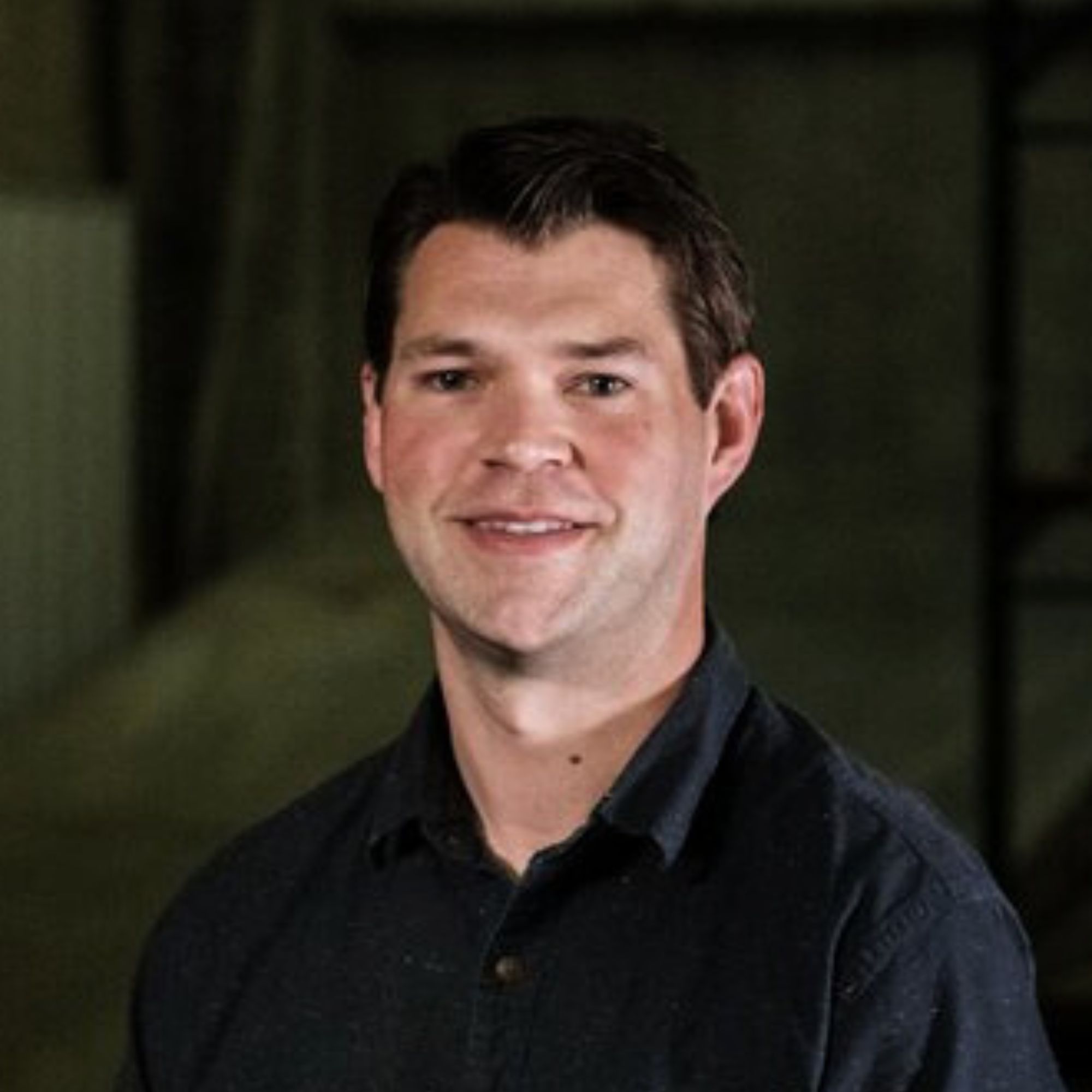Ready to build your own Founder-Led Growth engine? Book a Strategy Call
Frontlines.io | Where B2B Founders Talk GTM.
Strategic Communications Advisory For Visionary Founders
Actionable
Takeaways
Lead with value in customer discovery, not just research requests:
Shreesha hired an SDR to set up 200 meetings with construction firms, but didn't just ask for their time. Instead, he offered concrete value - either an industry best practices guide or one year of free service if they helped shape the product. This approach appealed to early innovators who wanted to be part of industry transformation. B2B founders should always answer "what's in it for them" before asking prospects to invest their time in discovery conversations.
Events require 60-day pre-and-post commitment for success:
Lumber generates 30% of its leads from industry events, but Shreesha emphasizes that showing up isn't enough. They start outreach two months before events, targeting previous attendees with promotional activities like free tickets or after-party invitations. During events, they focus on booking demos on-site rather than leaving follow-ups to chance. Post-event, they dedicate 60 days to aggressive follow-up because "those leads age faster than anything else." B2B founders should treat events as 4-month campaigns, not 2-day activities.
Use AI to solve change management challenges, not just productivity:
Rather than forcing manual timesheet users to adopt mobile apps, Lumber uses AI to digitize handwritten timesheets with 94% accuracy. This eliminates the change management barrier while gradually transitioning users to digital workflows. Shreesha noted that change management is "the toughest thing about construction industry" because workers are focused on building, not adopting new tools. B2B founders in traditional industries should use AI as a bridge between old and new workflows rather than demanding immediate behavioral change.
Position against established category leaders, not alongside them:
Lumber deliberately positions itself as the "back office" solution while Procore owns the "field management" category. Shreesha explained that back offices are "always thinly staffed" but "always overwhelmed" with regulatory compliance, payroll complexity, and worker management. Rather than competing directly with Procore's field focus, they created their own category serving CFOs, controllers, and payroll admins. B2B founders should identify underserved buyer personas adjacent to established categories rather than trying to displace category leaders directly.
Leverage vertical AI opportunities to rewrite industry rules:
Shreesha sees AI as the reason construction tech is finally attracting significant investment. The key is using AI to "rewrite the existing rules" rather than just digitizing current processes. For construction, this means taking workflows that have been manual for decades and reimagining them entirely. B2B founders should look for AI applications that fundamentally change how work gets done in their vertical, not just make existing work more efficient.
Conversation
Highlights
How Lumber Cracked Construction’s Code: The $21M Journey to Transform America’s Most Change-Resistant Industry
Most tech founders dream of disrupting glamorous industries—fintech, healthtech, the latest AI application. Shreesha Ramdas had a different vision: tackle the industry everyone else avoided. In a recent episode of Category Visionaries, the CEO and Co-Founder of Lumber shared how he deliberately chose construction—one of America’s most transformation-resistant sectors—and built a $21 million workforce management platform by rewriting the rules of customer discovery, event marketing, and technology adoption.
The story begins with a calculated hunt for opportunity in 2023. After years serving the tech industry across multiple startups, Shreesha was seeking his next challenge. “I was at that point in my life where I was like, I’ve served the tech industry for a long time. Let me go into an industry where I feel challenged, I feel the adrenaline rush back once again where there’s massive digital transformation still yet to be done,” he explains.
His co-founder, who had led construction engineering at Oracle, delivered the critical insight: “If you’re looking for an industry that needs massive transformation, look at construction.”
The $200,000 Customer Discovery Gambit
What happened next defies conventional startup wisdom. Instead of building first and validating later, Shreesha made an extraordinary investment in customer discovery. He hired an SDR on his payroll and set a seemingly impossible goal: secure 200 meetings with construction firms of different sizes.
But here’s where most founders would have failed—Shreesha understood that busy construction owners wouldn’t grant meetings to another Silicon Valley founder asking for insights. So he flipped the script entirely.
“We offered them an industry guide that talks about what are the best practices in the industry and how best in class construction firms are going about architecting their technology landscape,” Shreesha recalls. The alternative offer was even more compelling: “Whatever technology we come up with, we’ll make sure that we will give you one year free service.”
This approach cost him roughly $200,000 in SDR salary and opportunity costs, but it yielded something invaluable: genuine market intelligence from 200+ construction firms. The conversations revealed two critical trends that would shape Lumber’s entire strategy.
First, there was a generational changing of the guard. “A lot of the construction firms were started by construction folks who had worked in a construction company came out and decided to do their own. And now they were at that phase where they were transitioning over to the next generation,” Shreesha discovered. The next generation was asking uncomfortable questions: “Why the process so antiquated? Where is modern technology?”
Second, and more urgent, was a workforce crisis of unprecedented scale. “41% of the workforce are going to retire in next seven years. So by 2031, 41% of the workforce will be gone,” he learned. This wasn’t just about hiring new workers—it was about preserving institutional knowledge that was literally walking out the door.
The Adjacent Category Strategy
Armed with this intelligence, Shreesha faced a classic startup dilemma: how to compete against established players like Procore, which dominates construction project management. His solution reveals sophisticated strategic thinking about category creation.
“Procore is all about field. They care about what’s happening in the field, the productivity in the field and all the workflows that happen at the field level, we are all about back office,” Shreesha explains. Rather than fighting Procore head-to-head, Lumber carved out an entirely different category serving CFOs, controllers, and payroll administrators.
This positioning decision proved prescient. “Any construction firm, the back office is always thinly staffed. There are not that many people manning the back office. But if you look at their workload, they are always overwhelmed,” he notes. Construction’s complex regulatory environment—from prevailing wage laws to state-specific requirements—creates a nightmare scenario for back-office staff who must process payroll for hundreds of workers across multiple job sites.
Events as Four-Month Marketing Campaigns
While most startups treat industry events as two-day affairs, Lumber developed a sophisticated approach that treats each conference as a four-month marketing campaign. Their events strategy now generates 30% of their total leads, but it wasn’t always sophisticated.
“Early on, when we just raised a seed money, we didn’t have money to have a booth, we would go and participate in the event. We would try to sponsor after the event is done, some happy hour in collaboration with another construction software company. So we could split the cost, but have enough people coming at us,” Shreesha recalls of their scrappy beginnings.
Today, their approach is methodical: “About two months before the event, we start our outreach. We get the list of all the people who had attended the event the previous year. We find out how many of them are coming back.” They use promotional activities—free tickets, after-party invitations—to generate pre-event engagement.
The critical insight that separates Lumber from amateur event marketers: book demos on-site, not as follow-ups. “It’s very important to try to book a demo session with the person who is stopping by at the event itself, and now not leave it as a follow up event. Because these guys, construction professionals, are also busy. They’re busy constructing, they’re busy building structures.”
After each event, they dedicate 60 days to aggressive follow-up because, as Shreesha puts it, “those lead age faster than anything else.”
The AI Bridge Strategy
Lumber’s breakthrough moment came when they realized that artificial intelligence could solve construction’s most intractable problem: change management. Traditional construction tech companies fail because they demand immediate behavioral change from workers who are focused on building, not adopting new tools.
Shreesha’s team developed what might be called the “AI Bridge Strategy.” Instead of forcing manual timesheet users onto mobile apps, they use AI to digitize handwritten timesheets with 94% accuracy. “We now have over 94% confidence about taking that data that’s filled out in a manual timesheet and converting it to a digital record,” he explains.
This approach eliminates the change management barrier while gradually transitioning users toward digital workflows. “For your newer generation workers, for your workers who are comfortable with mobile phones and using apps on the mobile phone, we’ll offer them our mobile application. For the folks who still want to stick to the timesheet, we will use AI to convert that into a digital record.”
Over time, they conduct education programs showing how mobile app users “are getting more hours in the day,” naturally encouraging adoption without forcing it.
Content as Customer Intelligence
From day one, Lumber invested heavily in content creation, but not for typical lead generation purposes. They launched two podcasts—Builder Upper Show and Lumberyard—where they interview construction owners about their journeys building and scaling their companies.
“It was learning because we had just started our journey. As we heard construction owners talk about their challenges, we leverage those learnings, those lessons in building our product as well,” Shreesha explains. The podcasts serve as an ongoing customer intelligence operation, providing insights that directly inform product development.
This approach reflects a sophisticated understanding of content marketing in B2B contexts: rather than broadcasting your message, create platforms where customers reveal their deepest challenges and aspirations.
The AI-First Future Vision
Looking ahead, Shreesha sees AI as the force that will finally unlock construction’s digital transformation. But his vision goes beyond simple automation: “The big opportunity is how do you use AI to rewrite the existing rules in the construction industry. You need to really look at the existing workflows, existing processes, existing templates, and then think fresh, think about new ways of doing things.”
Lumber is positioning to become what Shreesha calls “the knowledge graph for the workers which will serve the industry for years to come.” As 41% of construction workers retire by 2031, capturing and transferring their institutional knowledge becomes a strategic imperative for the entire industry.
The company’s ultimate vision extends beyond workforce management to addressing the skills gap crisis. With massive infrastructure investments—data centers for tech giants, renewable energy projects, residential construction—the demand for skilled construction workers far exceeds supply. Lumber aims to bridge this gap by “bringing that knowledge, that training to the newer generation workers, getting students excited to come over to the construction world.”
Lessons for B2B Builders
Lumber’s journey offers several contrarian insights for B2B founders. First, customer discovery investments that seem excessive upfront—like Shreesha’s $200,000 bet on 200 meetings—can provide strategic advantages that compound for years. Second, adjacent category creation often proves more effective than direct competition with established players. Third, AI’s greatest opportunity may not be automating existing workflows but creating bridges between old and new ways of working.
Perhaps most importantly, Lumber’s story demonstrates that the industries everyone else avoids—because they’re “too traditional” or “change-resistant”—may offer the greatest opportunities for founders willing to invest deeply in understanding customer problems and designing thoughtful solutions.
In an era where most startups chase the latest trend, Shreesha chose to solve problems that have persisted for decades. The $21 million in funding and rapid growth suggest that sometimes the best opportunities hide in plain sight, waiting for founders brave enough to tackle them.














































